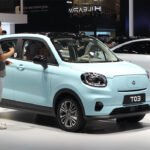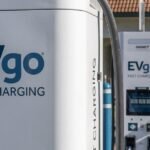The Advancements of 3D-Printing Technology in Automotive Manufacturing
In the past five years, 3D-printing technology, or additive manufacturing (AM), has rapidly evolved. Dutch car manufacturer Donkervoort is among the latest companies to leverage the unique benefits of this technology by 3D-printing intercoolers for its upcoming P24 RS supercar. Developed by Australia’s Conflux, these intercoolers have revolutionized the manufacturing process by significantly reducing weight. The aluminum-alloy liquid-to-air intercoolers have been trimmed down from 16kg to a mere 1.4kg.
Described as Formula 1 technology by Conflux, the intercoolers offer superior thermal performance and packaging benefits compared to traditional counterparts. The single-piece structure, devoid of joints or welds, promises enhanced durability. Donkervoort initially provided specifications for the intercooler, but Conflux managed to surpass expectations by delivering a design that allowed for further downsizing from the original prototype.
Unlike conventional intercoolers mounted at the front of the car, these compact intercoolers can be situated within the engine bay, reducing the length of the inlet tract by two-thirds. This configuration results in faster throttle response, improved efficiency, and optimized weight distribution, all of which directly enhance the driving experience.
Utilizing AlSi10Mg, a high-grade aluminum alloy, Conflux manufactures the intercoolers using AM. This alloy, widely accepted in various industries including aviation, motorsport, and industrial applications, ensures the intercoolers meet stringent performance standards.
Intercoolers play a crucial role in cooling compressed air before it enters the engine, ensuring optimal performance and combustion. The new Conflux intercoolers feature extremely thin fins, measuring at 160 microns, just a few times thicker than a human hair. Thinner fins enhance heat conduction, effectively dissipating excess heat from the compressed air.
3D-printing technology has revolutionized the automotive manufacturing industry, offering innovative solutions like the lightweight and efficient intercoolers developed by Conflux for Donkervoort’s P24 RS supercar. With advancements in AM processes, the possibilities for enhancing performance and efficiency in automotive design are limitless.







